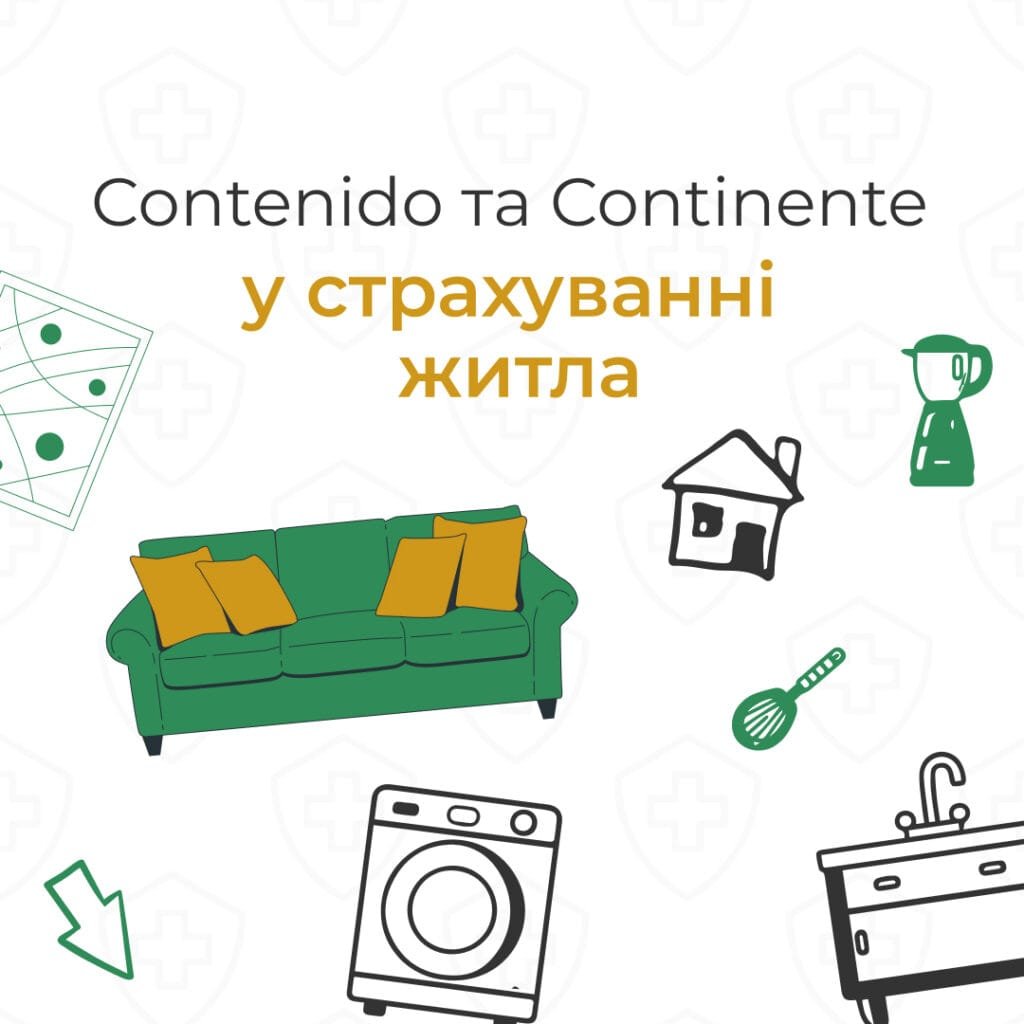When it comes to home insurance, it is important to understand that two main aspects are insured: Content (content) and Continent (construction). These concepts encompass different components of property, and their correct delineation and valuation are key to ensuring optimal insurance coverage.
What is Continente?
Continent — this is the physical structure of your home, that is, all of its immovable parts.
This includes:
Main structural elements: Foundation, walls, partitions, beams, floors, roof.
Windows, doors, floors, tiles, wall painting.
Engineering networks: Stationary water supply, electricity, heating, gas systems.
Air conditioning and sewage systems.
Additional buildings and elements: Garages, storage rooms, fences, swimming pools.
Gardens, bushes, trees that are part of a private plot.
Security and communication systems:
Intercoms, video surveillance systems, fire alarms, lightning rods.
What is not included in Continente? Movable property (Contenido), as well as objects intended for commercial use, such as agricultural or industrial plantations.
What is Content?
Content includes all movable property located inside the dwelling or adjacent premises used exclusively by the insured:
Furniture and household appliances: Furniture, kitchen equipment, household appliances (refrigerators, washing machines, etc.).
Personals: Clothes, shoes, books, accessories.
Jewelry, watches (within the policy limits).
Things for leisure: Bicycles, toys, sports equipment.
Other items: Appliances, computers, tablets, TVs, etc.
Values: Jewelry and other valuables are insured up to 10% of the Contenido capital (maximum 6,000 euros). If the value of an individual item exceeds 3,000 euros, it is insured as an object of special value.
How to evaluate Continente correctly?
Calculate the cost of building restoration:
Consider the costs of building materials and work required for restoration or reconstruction.
Land is not taken into account.
Evaluate additional designs:
Swimming pools, garages, fences, garden plots, if they are part of the property.
How to properly evaluate Contenido?
Take inventory: List all the things in your home and indicate their value.
Estimate the cost of replacement: Calculate how much it would cost to replace all the things with new ones.
Distinguish values: Identify items that require separate insurance due to their high value.
Update your rating: Regularly review your shopping list, adding new purchases.
Why is it important to correctly evaluate Continente and Contenido?
Reinsurance: if the insurance amount is overstated, you will pay more than you need to.
Underinsurance: if the amount is underestimated, in the event of damage you will receive less than is necessary to recover.
Balance: an accurate assessment will help optimize costs and ensure full risk coverage.
Contenido and Continente are key concepts in home insurance. Continente covers the immovable elements of the building, while Contenido covers the movable items. Correctly assessing both components allows you to ensure optimal insurance coverage and avoid unnecessary costs. Always consult with an insurance agent to ensure the correctness of your calculations and the terms of the policy.
